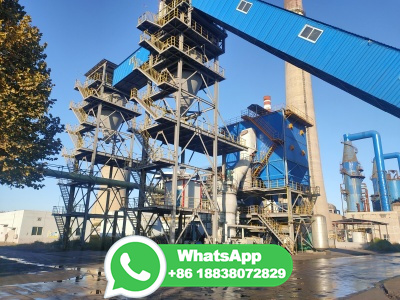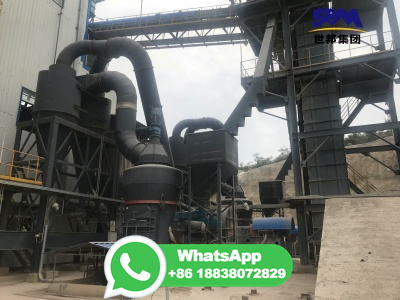
Known as 'reducing', this can be done either in the blast furnace, where hot air is injected into a continuous feed of coke, sinter and lime, or by the direct reduced iron (DRI) process. The result from both is liquid iron, which is then transported to the basic oxygen furnace.
WhatsApp: +86 18203695377
Abstract. Iron ore is regarded as the second most important commodity behind oil. As an essential input for the production of crude steel, iron ore feeds the world's largest trilliondollarayear metal market and is the backbone of global infrastructure. To meet the growing demand for steel products, world iron ore production has increased ...
WhatsApp: +86 18203695377
In a DR process, iron ore pellets and/or lump iron ores are reduced by a reducing gas to produce DRI or hot briquetted iron (HBI). Depending on the generation of the reducing gas, two different DR processes are commercially available: gasbased and coal/oilbased. ... Iron Ore Pellets for Blast Furnace Feedstocks—Determination of the Free ...
WhatsApp: +86 18203695377
Today, no one process is solely used to process steel. A blast furnace processes most iron ore, creating pig iron. The basic oxygen process is used to create steel using the pig iron and electric arc is used to produce steel from plentiful scrap, although either method can process pig iron or scrap iron.
WhatsApp: +86 18203695377
Hopewell Furnace made castings and pig iron from . An ancient alchemy sustained Hopewell Furnace: transforming mineral into metal. Since 4,000 years ago, when humans learned how to free iron from ore, the basic process has not changed. Iron oxide is heated in an intense flame fed by carbon fuel. Oxygen in the ore combines with carbon ...
WhatsApp: +86 18203695377
The Blast Furnace is located in enter Keldagrim, the player must have started the The Giant Dwarf quest by speaking to the Dwarven Boatman within the mines east of Rellekka. The map on the right shows a path the player can take walking from Seers' Village/Camelot to the mines east of Rellekka. Once the player has visited Keldagrim at least once, they can return via mine cart from ...
WhatsApp: +86 18203695377
6 steel and engineering companies, the Japan Iron Steel Federation, and New Energy and Industrial Technology Development Organization • Research development goals: 1) Reduction of CO2 emissions from Blast Furnaces • Iron ore reduction with other agents (hydrogen) • Reforming coke oven gas aiming at amplifying H2 content by utilizing
WhatsApp: +86 18203695377
Blast furnaces are still the dominant process for making iron in the world. Traditionally, pig iron is first produced in a blast furnace (BF) from iron ores and further refined into crude steel in a basic oxygen furnace. ... Iljana, Mikko, EetuPekka Heikkinen, and Timo Fabritius. 2021. "Estimation of Iron Ore Pellet Softening in a Blast ...
WhatsApp: +86 18203695377
Electric Arc Furnace Credit: Materials Processing Institute "This project here for British Steel on Teesside can still go ahead, but what I worry about is when we want to grow steel making in the ...
WhatsApp: +86 18203695377
Blast Furnace Basic Oxygen Furnace (BFBOF): This is the dominant steel production route in the iron and steel industry, involving the reduction of iron ore to pig iron in the blast furnace. BFBOF operation relies almost entirely on coal products, emitting ~70% of CO2 in the integrated plant (BF iron making).
WhatsApp: +86 18203695377
However, sinter and pellets are now the dominant blast furnace burden, because the natural lump supply has declined dramatically due to depletion of the world's highgrade competent iron ore resources. In addition, more iron ore concentrates are being produced due to the increasing need for beneficiation to upgrade lowgrade iron ore resources.
WhatsApp: +86 18203695377
World resources are estimated to be greater than 800 billion tons of crude ore containing more than 230 billion tons of iron. The only source of primary iron is iron ore, but before all that iron ore can be turned into steel, it must go through the sintering process. Sinter is the primary feed material for making iron and steel in a blast furnace.
WhatsApp: +86 18203695377
The blast furnace uses coke, iron ore and limestone to produce pig iron. Coal traditionally has been a key part of the cokemaking process. The coal is crushed and ground into a powder and then charged into an oven where it is heated to approximately 1800°F in the absence of oxygen. As the oven is heated, the coal begins to melt so most of the ...
WhatsApp: +86 18203695377
The iron ore production has significantly expanded in recent years, owing to increasing steel demands in developing countries. However, the content of iron in ore deposits has deteriorated and lowgrade iron ore has been processed. The fines resulting from the concentration process must be agglomerated for use in iron and steelmaking. This chapter shows the status of the pelletizing process ...
WhatsApp: +86 18203695377
The term blast furnace comes from the blast of hot air that is blown into the lower part of the furnace at between 1400º to 2100ºF. Molten iron is produced in a blast furnace by the following steps: 1. Charge (solid iron ore, coke, and limestone) is constantly dumped into the top of the furnace. 2.
WhatsApp: +86 18203695377
Sintering is the most economic and widely used agglomeration process to prepare iron ore fines for blast furnace use. In this chapter, the sintering process is first described to identify the key steps of the process, that is, granulation and thermal densification. Discussion is then focused on the effect of the chemical, physical, and ...
WhatsApp: +86 18203695377
It is made by smelting iron ore into a transportable ingot of impure high carboncontent iron as an ingredient for further processing steps. It is the molten iron from the blast furnace, a large cylindershaped furnace charged with iron ore, coke, and limestone. coke A fuel with few impurities and a high carbon content, usually made from coal.
WhatsApp: +86 18203695377
MIDREX is an innovative ironmaking process that has been specifically developed to produce direct reduced iron from iron ores and natural gas/hydrogen. MIDREX is a gasbased shaft furnace process that converts iron oxides in the form of pellets or lump ore into directreduced iron (DRI). MIDREX technology is highly customizable ...
WhatsApp: +86 18203695377
The preferred method of iron production in Europe until the development of the puddling process in 178384. Cast iron development lagged in Europe because wrought iron was the desired product and the intermediate step of producing cast iron involved an expensive blast furnace and further refining of pig iron to cast iron, which then required ...
WhatsApp: +86 18203695377
of iron ore, using an integrated steel manufacturing process or a direct reduction process. In the conventional integrated steel manufacturing process, the iron from the blast furnace is converted to steel in a basic oxygen furnace (BOF). Steel can also be made in an electric arc furnace (EAF) from scrap steel and, in some cases, from
WhatsApp: +86 18203695377
In the upper region of the blast furnace where temperature range from 600 to 700 C. the iron ore or iron oxide is reacts with the gaseous CO reductant to produce iron: Fe 2 O 3 (s) + 3CO (g) → 2Fe + 3CO 2 (g) Lower in the blast furnace where higher temperatures occur, the iron ore may react directly with the coke or carbon:
WhatsApp: +86 18203695377
Traditional steelmaking relies on huge amounts of fossil fuel to power the blast furnaces that turn iron ore into molten iron. An electric arc furnace uses electrolysis to melt scrap metal.
WhatsApp: +86 18203695377
blast furnace process. The iron ore concentrate is now mixed and ready for the pelletizing process. Pelletizing A pellet plant contains a series of balling drums where the iron ore concentrate is formed into soft pellets, in much the same manner that one rolls a snowball, to make a pellet about the size of a marble (between 1/4" and 1/2").
WhatsApp: +86 18203695377
The purpose of the blast furnace is to separate iron ore extracted from the ground into its component parts: iron and oxygen. A form of carbon, normally coal, combines with the oxygen in the iron ore.
WhatsApp: +86 18203695377
Primary steel production typically uses iron ore and the process known as blast furnace with basic oxygen furnace (BFBOF). For BFBOF steel plants, capture technologies target CO 2 from the blast furnace gas as it contains the highest CO 2 concentration by volume within the steelmaking process. Various process heaters located throughout the plant account for a large amount of CO 2 emissions ...
WhatsApp: +86 18203695377
Lump Directly fed to blast furnace and direct reduction Sinter feed Agglomeration by sintering to be fed in blast furnaces Pellet feed < Agglomeration by pelletizing to be fed to blast furnace and direct reduction Table 1. Iron ore products classification for ironmaking [3]. Iron Ore Pelletizing Process: An Overview
WhatsApp: +86 18203695377
The raw materials mix or "charge" enters the furnace from the top and hot air is blown or blasted from the bottom causing the coke to burn and the oxygen to combine with carbon in the coke to form carbon monoxide. Now, this carbon monoxide that is unstable, reacts with the ore to form carbon dioxide and iron. The Separation Of Iron.
WhatsApp: +86 18203695377
The process of extracting iron from its ore involves crushing the ore to a powder and then heating it in a furnace with a carbon source. The carbon reacts with the oxygen in the ore to create carbon dioxide gas, which leaves the furnace through the smokestack. The molten iron is then poured into molds to cool and solidify.
WhatsApp: +86 18203695377
The blast furnace ironmaking process is currently and will continue to be the dominant process for providing steelmaking raw materials worldwide.
WhatsApp: +86 18203695377
6 Conclusion. The blast furnace process is particularly suitable to play a part in the energy transition of production of steel starting from iron ore. It promises to be the 'melting pot' and a 'vital vehicle' for absorbing energy transition levers on existing primary steelmaking capacity.
WhatsApp: +86 18203695377
The extraction of iron from its ore is a long and subdued process, that helps in separating the useful components from the waste materials such as slag. What happens in the Blast Furnace? The purpose of a Blast Furnace is to reduce the concentrated ore chemically to its liquid metal state.
WhatsApp: +86 18203695377
Since the purpose of iron ore processing is to remove silicate minerals from the ore, adding silicates back in the form of a binder is counterproductive. ... pellets for modern large blast furnaces and DR processes are discussed in Chapters 17 and 18—Quality requirements of iron ore for blast furnace and other alternative ironmaking processes ...
WhatsApp: +86 18203695377
A bloomery in operation. The bloom will eventually be drawn out of the bottom hole. A bloomery is a type of metallurgical furnace once used widely for smelting iron from its bloomery was the earliest form of smelter capable of smelting iron. Bloomeries produce a porous mass of iron and slag called a mix of slag and iron in the bloom, termed sponge iron, is usually ...
WhatsApp: +86 18203695377